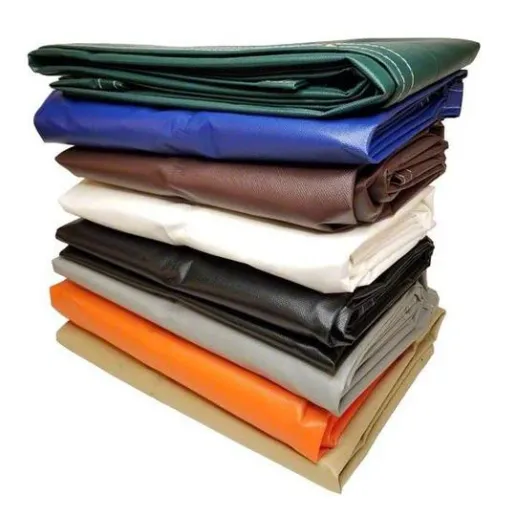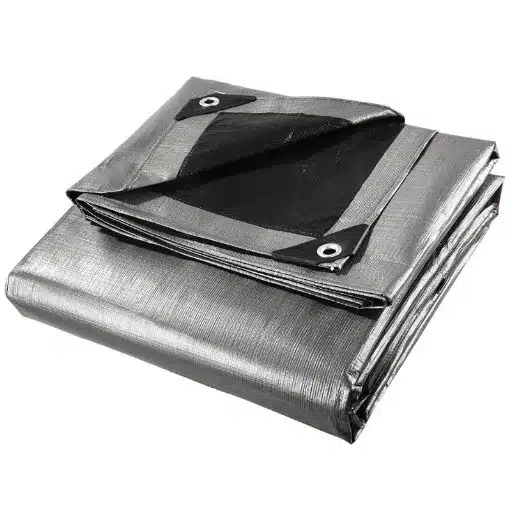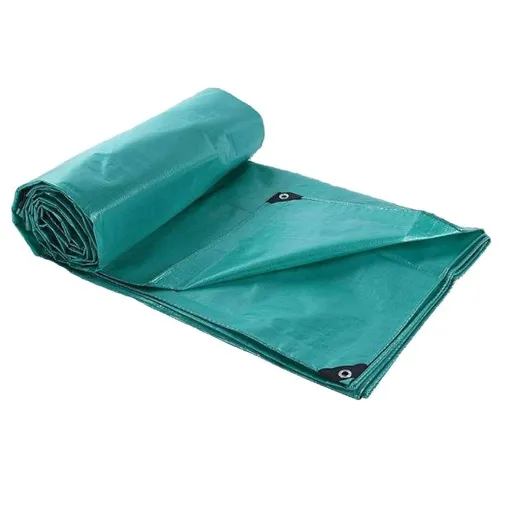Reliable coverage and durability in extreme solar exposure are what make these sun-resistant tarps the perfect-required tools for both private and industrial use. Designed to withstand extended exposure to harsh ultraviolet radiation (UV), these tarps heavy-duty provide that unmatched protection for outdoor equipment, vehicles, structure, and more. Whether protecting your valuable assets from sun damage, minimizing heat effects on materials that can be easily affected, or basically looking for a much durable protective solution, knowledge about UV-resistant tarp and the science behind it really sets you free. This guide touches upon all you need to learn-from the different materials and coatings used in the construction of tarps to important factors one should consider in choosing the appropriate tarp for their requirements. Prepare yourself to gain insights from the pros and practical advice to help you decide on how to provide good maintenance and upgrades to your UV protective investment.
FUNDAMENTALS
Understanding Sun-Resistant Tarps
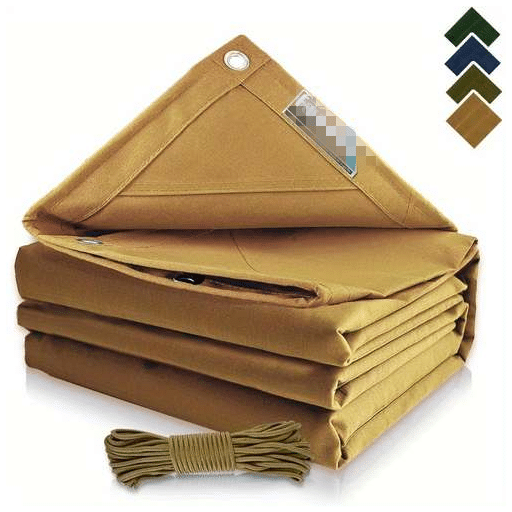
What Is a Sun-Resistant Tarp?
Sun-resistant tarps, also known as UV-resistant tarps, are very durable coverings that have been created to withstand long-term sun exposure by UV-radiation. These tarps are crafted from advanced materials, usually polyethylene or vinyl, that have been treated with UV inhibiting additives or coatings.
UV Protection Features
- UV inhibiting additives
- Specialized coatings
- Prevention of cracking and fading
- Resistance to embrittlement
Construction Quality
- High-density weaves
- Heat-sealed seams
- Weatherproof treatments
- Reinforced construction
Typical Applications
- Equipment protection
- Vehicle covering
- Structure shielding
- Agricultural item protection
These enhancements prevent degradation such as cracking, fading, or embrittlement, which are characteristics of a standard tarp that has been exposed to sunlight for longer hours. Sun-resistant tarps also tend to have high-density weaves or heat-sealed seams and weatherproof treatments to augment durability in numerous outdoor conditions. By blocking or filtering harmful UV rays, the tarps aid in extending the life of the objects they cover and guarantee solid, consistent performance.
Salient Features of UV Resistant Tarps
UV resistant tarps incorporate advanced engineering and materials science to deliver superior protection. Here are the key features that set them apart:
Exceptional UV Protection
UV resistant tarps are built using specialized materials such as high-density polyethylene (HDPE) and UV-stabilized coatings to block or reduce the damaging effects of ultraviolet radiation. This helps reduce degradation of materials from long sun exposure, making it best for outdoor use in harsh environments.
Tear or Durability Resistance
These tarps provide for great strength and resistance to tear under high stress due to a reinforced weave and heat-sealed seams. It is safe to trust them to cover any sharp or heavy objects, even if in harsh weather.
Weatherproofing Prospects
Almost all UV-resistant tarps guard against water, mildew, and mold growth. This provision ensures multi-dimensional protection and utmost performance in any environmental conditions, ranging from scorching sun to heavy rainfall.
Lightweight and Flexible Construction
Despite their rugged construction, UV-resistant tarps maintain a lightweight and flexible design, which allows easy handling and installation. This is a key feature for applications requiring frequent adjustments or mobility.
Increased Lifetime
The use of UV inhibitors and weather-resistant treatments substantially extends the lifespan of the tarps over regular, untreated tarps. Hence, this ultimately yields an advantage for the end-user in the long run who specifies for a dependable and lasting solution.
Widely Used for Various Purposes
A UV-resistant tarp finds use in many fields. For example, construction, agriculture, transportation, and recreational activities have all made use of it to protect assets, such as machinery, crops, and outdoor furniture, as well as provide shelter and shade in a diverse array of situations.
UV-resistant tarps, through their stronger materials and finer engineering, provide a better solution to sun damage and protection needs in commercial and residential settings.
Heavy Duty Poly Tarps-benefits
Heavy-duty poly tarps provide a versatile and cost-effective means for many applications, especially those requiring durability, weather resistance, and UV protection. Some of these benefits are:
Core Benefits
- Outstanding durability
- Better UV protection
- Waterproof and weatherproof
- Cost-effective solution
Key Applications
- Agriculture protection
- Construction site coverage
- Logistics and transport
- Disaster relief operations
Detailed Benefits Breakdown:
Outstanding Durability:
Made from heavy-duty polyethylene, these tarps are designed to weather the severe environmental conditions like strong winds, heavy rains, and heavy snowfall. Besides being tear-resistant, they prove to be reliable for any short-term or long-term use.
Better UV Protection:
Modern heavy-duty poly tarps get a treatment of ultraviolet (UV) inhibitors that strengthen the poly tarps against sun exposure. It can also reduce the degradation of its poly tarps as it gets longer exposure to UV radiation, thus ideal for outdoor applications.
Waterproof and Weatherproof:
The poly tarps defense against any leakage of water by making a strong barrier on waterproof coating. So they can raise their hand against the weather and defend any car, equipment, and goods from moisture to avoid damage.
Cost-Effective:
In contrast to fixed structures, heavy-duty poly tarps are usually an inexpensive yet viable solution to all sorts of ephemeral coverage and protection needs. The easy installation of the heavy-duty tarp offers even more cost benefits.
Heavy-duty poly tarps combine affordability, functionality, and innovative material properties, making them an indispensable tool across various sectors. Advanced manufacturing techniques, including UV stabilizers and high-density polyethylene construction, ensure their reliability even in the most demanding conditions, according to recent search trends and user queries.
TARP TYPES
Types of Sun-Resistant Tarps
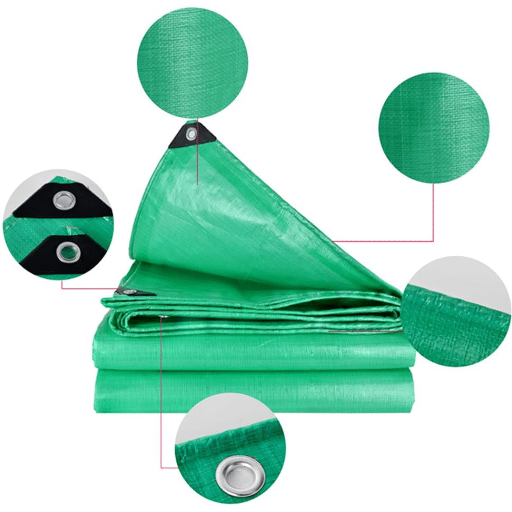
Heavy-Duty Poly vs. Vinyl Tarps
For any comparison between tarps, heavy-duty poly or vinyl, one must compare the material properties, the durability, and the cost, with a standing reference to recent data trends gathered from search engine. Here’s a comprehensive comparison:
Selection Guidelines
According to the search behavior, heavy-duty poly tarps were preferred as they were generally lightweight and economical, hence used for fairly temporary applications, like outdoor covering or materials on a construction site. Thus, the usage of the tarp must primarily dictate the choice of poly or vinyl; for the budget-conscious consumer seeking something temporary or something that offers lightweight coverage, heavy-duty poly tarps will suffice. Those seeking something heavy-duty, and heavy-duty to stay, for long and industrial applications will fare well with vinyl tarps.
Waterproof UV Resistant Options
When probing waterproof UV-resistant options, the material constitution and performance features become stringent variables to be considered. According to the latest data obtained from search engine, tarps designed nowadays, jaunty enough to hold the status of waterproof and UV-resistant, are made from polyethylene, PVC-coated fabrics, or vinyl.
Polyethylene Tarps
- Coated with UV stabilizers
- Increased UV radiation resistance
- Lightweight and inexpensive
- Suitable for residential applications
Vinyl Tarps
- Superior waterproofing layer
- Enhanced UV resistance
- Thicker PVC-based coating
- Ideal for harsh weather conditions
PVC-Coated Fabrics
- Excellent water resistance
- Professional-grade protection
- Industrial applications
- Construction sites and storage
These materials are designed to withstand prolonged exposure to sunlight and prevent water penetration, suitable for both residential and industrial applications. At the end of the day, material choice boils down to the specific functional requirements, like duration of exposure, environmental conditions, and budget. Advanced waterproof UV-resistant tarps guarantee long-term performance and optimum protection, thereby making them a worthwhile investment in cases where demands run high.
Super Heavy Duty Tarps: When to Use Them
Super heavy duty tarps are expressly designed when the highest level of durability and extreme ability to resist harsh environmental conditions is required.
Primary Applications
- Industrial-grade machinery covering
- Agricultural storage protection
- Disaster-response operations
- Temporary roofing solutions
Weather Resistance
- Heavy rain protection
- High wind resistance
- Prolonged UV exposure tolerance
- Extreme temperature endurance
Construction Features
- Multilayer polyethylene construction
- High denier fabric reinforcement
- Heat-sealed seams
- Enhanced tear resistance
According to search data, these tarps are requested over time as a temporary roofing cover in construction sites and covers for large machinery and vehicles that include boats and RVs. Their importance in emergency situations cannot be stressed enough, such as for post-storm damage repairs, because of their tear resistance and waterproof properties. For peak functionality, proper selection regarding size, thickness, and environment parameters of super heavy-duty tarps would be a function of the application at hand.
APPLICATIONS
Applications of Sun-Resistant Tarps
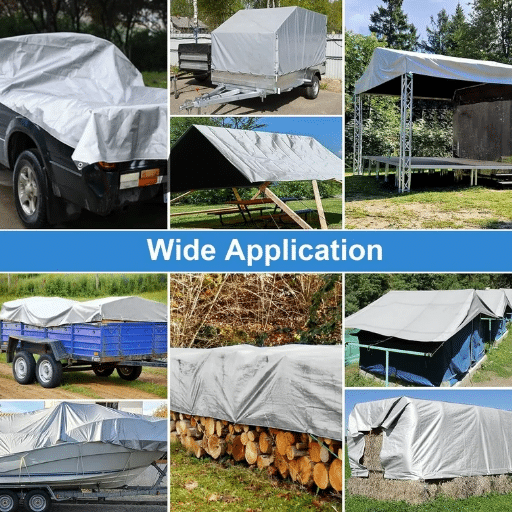
Protective Uses- Your Property
UV tarps are one of the best measures to keep residential assets from being damaged by the sun and weathering. These tarps with very high UV protection rating can form an effective shield for garden furniture, vehicles, and gardening equipment.
Common Residential Uses:
- Pool covers and protection
- Temporary roofing solutions
- Firewood stack protection
- Summer shade provision
- Garden furniture covering
Recent set of data on search engine show growing interest in using tarps for pool covers and for temporary roofing purposes because of their efficiency in mitigating sun damage and ensuring that exposed surfaces have an extended life. Available in many sizes and specifications, sun-resistant tarps offer a long-term resplendent solution to the problem of protecting residential properties.
Commercial Application: Large Tarps for Business
Tarps serve to be of greatest commercial use as cost-efficient and very versatile covers and sheets for different operational needs.
Commercial Applications:
- Warehousing inventory protection
- Construction material covering
- Equipment protection from moisture
- Scaffolding weather shields
- Building protection during construction
Following the latest search trends, the increasing number of inquiries related to “industrial tarp solutions” and “UV-resistant tarps” signifies a rising demand from agricultural and manufacturing sectors. Farmers are increasingly turning to industrial-grade tarps to shield their crops, hay, and equipment, thus enhancing productivity and curbing losses caused by weather variations.
Industrial Use: Heavy-Duty Tarps in Harsh Conditions
Heavy tarp provides the best option in industrial environments, offering varied needs to protect machinery, raw materials, and finished goods from environmental damage.
Industrial Applications:
- Construction site protection
- Mining equipment covering
- Logistics and transport
- Chemical resistance applications
- Extreme temperature environments
According to latest data from search engine, searches for “industrial tarps” and “heavy-duty weatherproof tarps” have been steadily on the rise, reflecting increased interest across various sectors. Hence, with enhanced coating technologies and reinforced seams, manufacturers continue to outdo themselves in durability and reliability to meet the increasing temptations of consumers for high-performance solutions.
MAINTENANCE
Maintenance Tips for Longevity
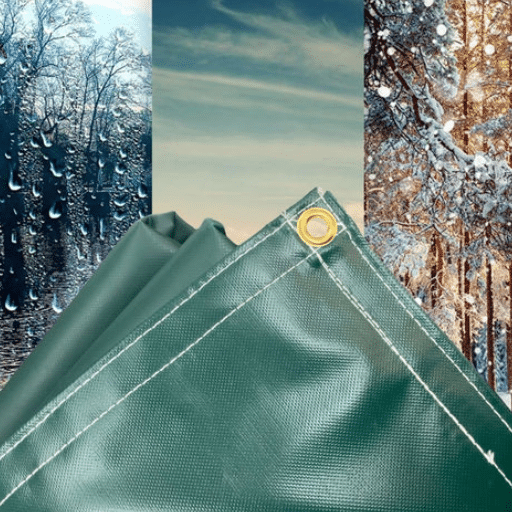
How to Clean and Maintain Your Tarps
Correct cleaning and maintenance of a tarp are essential to ensure the longevity and consistent performance of these materials under tough environmental conditions. Follow these measures to clean the tarp:
Following these guidelines will help you to maximize the functioning life of your tarps, thus allowing for reliable application in a variety of covers. Besides maintaining the structural integrity of the tarps, regular upkeep will lessen your need for replacement, thereby maximizing your purchase.
Storage Tips for Long-Lasting Lifespan
Proper storage of tarps when they are not in use will therefore aid the tarps in achieving their extended lifespan. According to modern-day knowledge and best practices, the tarps should be kept in a clean and cool place with dry air to restrict the formation of mold, mildew, or material degradation.
Pre-Storage Preparation
- Clean and dry tarps thoroughly
- Remove all water and dirt
- Check for damage or wear
- Apply protective treatments if needed
Storage Environment
- Clean, cool, and dry location
- Away from direct sunlight
- Temperature-controlled if possible
- Proper ventilation to prevent condensation
Folding and Organization
- Fold or roll without sharp creases
- Use storage racks or containers
- Avoid excessive pressure or weight
- Label for easy identification
Clean and dry the tarps thoroughly before storing them, since water and dirt give chance for quick wear. Fold or roll the tarp in neat stacks without any sharp creases, which can weaken the structural fibers of the material in the long run. Check tarps periodically when stored so that any damage or deterioration can be attended to immediately. By practicing these extended practices and adhering to all evidence-based guidelines, you will greatly contribute toward keeping the operational life of your tarps for many years.
Repairing Small Damages: Keep the Tarp Performing
To repair minor damage to your tarp, use the right technique and materials for a permanent solution.
Small Tears & Punctures
- Clean the affected area thoroughly
- Use high-quality tarp repair tape
- Apply tape 1 inch larger than damage
- Press firmly to remove air bubbles
- Ensure waterproof seal
Larger Damage & Torn Edges
- Use tarp patch kits
- Apply patches on both sides
- Use pre-cut patches with adhesive
- Consider heat sealing if recommended
- Follow manufacturer guidelines
Professional Repair Tips
For small tears or punctures, high-quality tape for tarp repairs will suffice. These types of tape adhesives seal the tarp in a waterproof manner, allowing it to retain its strength and weather resistance. According to recent user guides and expert opinion on repair methods, it is recommended to apply the patch on both sides of the tear to maximize strength. Keeping the tarp in shape by proper repairs makes them last longer, hence less frequent replacements and, in the end, a cost-effective and environmentally viable option.
SELECTION GUIDE
Choosing the Right Sun-Resistant Tarp
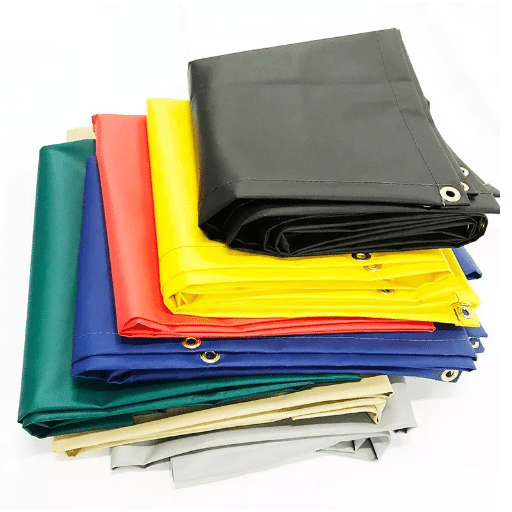
Essential Selection Criteria
Factors to Consider When Purchasing
Before selecting a sun tarpaulin, key factors must be weighed for best performance and durability. On the basis of the most recent purchase data, the priorities buyers consider include the type of material used, UV resistance rating, and the application itself. The two most searched materials are HDPE and PVC due to their durability and weather resistance. These probably stand on the top of the buyers’ consideration list, with UV-resistant coating as the other. The coating helps against rapid deterioration of the tarp when exposed to sunlight. Size comes next, with installation-assisted reinforcements such as grommets or hemmed edges, sought after to ensure a safe and proper setting.
Best Brands Suggested by Experts
According to the latest data from search engine, the following brands continue to earn acknowledgment concerning quality brand tarpaulin products. Tarp Plus has built a reputation for polyethylene tarps that hold up with high UV resistant property and thoroughly reinforced hems for industrial or personal use. Another highly recommended tarp for cost and resistance application is that of Grizzly Tarps. For specific needs, CanvasCamp is a greater manufacturer of canvas tarps and an excellent choice due to their breathability and durability upkeep. Further, Blue Hawk and TRM Manufacturing are rated very well for serving customer needs with a more diversified product line from lightweight to the extreme.
Common Pitfalls to Avoid
When purchasing tarps, one of the most common mistakes is not assessing particular needs of the intended application. For example, a violation could be buying a lightweight tarp for heavy-duty use in prolonged outdoor coverage under harsh weather conditions, which would definitely lead to the tarp undergoing damages and fail in very little time. Furthermore, other times, not double-checking measures is often how tarps end up being either too small or too large, leading to compromised functions and securing mechanisms. Some other observed trends are for example, stuff like the misunderstanding of marketing lingo- thinking that all “water-resistant” tarps are waterproof, resulting in disappointment.
Considering them alongside verified user reviews can guide a consumer into purchasing exactly what suits their needs and environmental circumstances. Thorough consideration of needs for uses, materials, and product claims will surely maximize their investment by giving that buyer objectives of the best performance and longevity.
FAQ
Frequently Asked Questions
Being constituted of UV protective materials, heavy duty tarps are an excellent sun shield. Thus, they may be used for protecting campers or those seated outside at a picnic. Being heavy duty also denotes that they are made of strong materials, being tear-resistant and waterproof for longer life in use. The choice of thinnest waterproof tarp or a heavy-duty waterproof tarp should be made for added-functional purposes. The extra thickness of these tarps contributed to their resisting fade and finish well with time.
UV resistant tarps give stronger protection from UV rays than regular tarps. Regular tarps will give you basic shelter, but UV resistant tarps are treated to resist the degradation effects of sunlight. This makes them an ideal choice for prolonged outdoor applications like covering vehicles and equipment. They come in a wide range of materials from polyethylene tarps to vinyl tarps, adding waterproofing and tear-resistance options to the mix. For anyone serious about sing blocking, UV treatments can do wonders for extending the working life of your cover.
Yes. Through the years, many types of waterproof tarps have been introduced to fill in the different needs. Heavy duty tarps, with waterproof features, are used for construction sites or as covers, implying that they are heavy and waterproof, while clear tarps provide some water resistance but allow diffusion of sunlight and may be lesser waterproof. Apart from that, one may opt for brown poly tarps or blue tarps, according to visual demand or work demand. The consideration of waterproof tarp features with respect to grommets for easy tie-down or reinforced edges for strength should be considered during selection.
Of course! Any grommeted tarp will be an excellent service in the outdoors. Setup is straightforward with the grommets, providing a primary attraction to tie on an overhead sun shade or cover to your campsite. They are great for use in heavy-duty camping, able to withstand the prevailing bad weather while giving sun protection. When purchasing a camping tarp, make sure it is waterproof and tear-resistant so that it will serve you throughout your courses in the outdoors. Also, factor in large coverage so that it can cover ample amounts of camping gear and cooking area.
A heavy duty tarp is one made with thick materials to withstand a tough environment. Generally, heavy duty tarps are made of high-density polyethylene or vinyl, which reduces tear, rip, or UV damage. Said to be made for 16 mil heavy-duty tarps are durable and strong and can be used in industrial applications or outdoors for a prolonged period. Waterproofing, while reinforced grommets, would definitely be good features to look for. While looking for such a tarp, finding one that provides sun protection and has a multipurpose value will surely be a plus.
REFERENCES
Reference Sources
University of Wyoming – Snow Now: An Artificial Snow Product
This document discusses the use of tarps in outdoor applications and their resistance to sunlight, providing insights into UV protection and durability.
Academia.edu – Textiles in Transportation
This handbook explores the importance of UV resistance in tarpaulins used in transportation, emphasizing the need for high-strength and sunlight-resistant materials.
AMPP Proceedings – Tarpaulin Covering Protection Study
This two-year field study investigates the effectiveness of UV-resistant tarps in protecting materials from sunlight degradation, offering practical insights into their performance.

